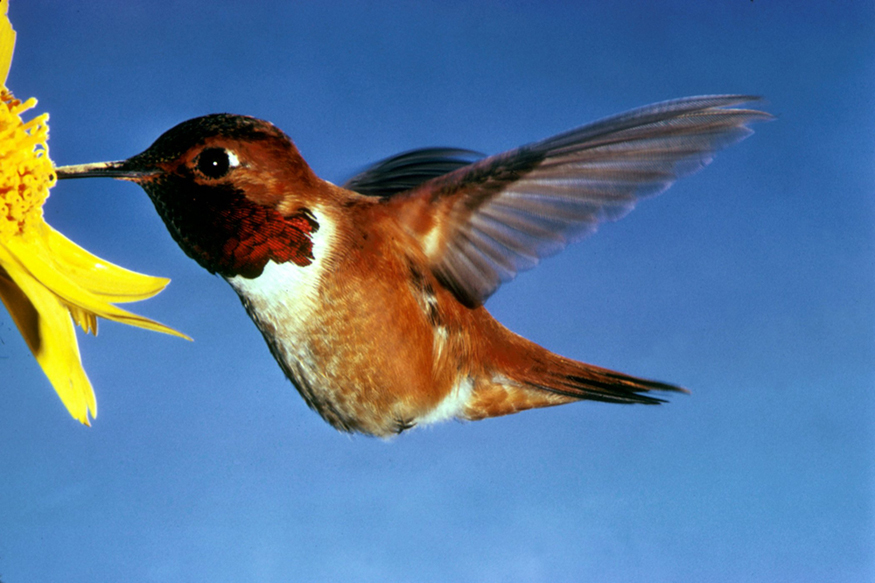| << Chapter < Page | Chapter >> Page > |
During each successive time , the voltage falls to 0.368 of its preceding value. In a few multiples of , the voltage becomes very close to zero, as indicated by the graph in [link] (b).
Now we can explain why the flash camera in our scenario takes so much longer to charge than discharge; the resistance while charging is significantly greater than while discharging. The internal resistance of the battery accounts for most of the resistance while charging. As the battery ages, the increasing internal resistance makes the charging process even slower. (You may have noticed this.)
The flash discharge is through a low-resistance ionized gas in the flash tube and proceeds very rapidly. Flash photographs, such as in [link] , can capture a brief instant of a rapid motion because the flash can be less than a microsecond in duration. Such flashes can be made extremely intense.
During World War II, nighttime reconnaissance photographs were made from the air with a single flash illuminating more than a square kilometer of enemy territory. The brevity of the flash eliminated blurring due to the surveillance aircraft’s motion. Today, an important use of intense flash lamps is to pump energy into a laser. The short intense flash can rapidly energize a laser and allow it to reemit the energy in another form.

High-speed flash photography was pioneered by Doc Edgerton in the 1930s, while he was a professor of electrical engineering at MIT. You might have seen examples of his work in the amazing shots of hummingbirds in motion, a drop of milk splattering on a table, or a bullet penetrating an apple (see [link] ). To stop the motion and capture these pictures, one needs a high-intensity, very short pulsed flash, as mentioned earlier in this module.
Suppose one wished to capture the picture of a bullet (moving at ) that was passing through an apple. The duration of the flash is related to the time constant, . What size capacitor would one need in the circuit to succeed, if the resistance of the flash tube was ? Assume the apple is a sphere with a diameter of
Strategy
We begin by identifying the physical principles involved. This example deals with the strobe light, as discussed above. [link] shows the circuit for this probe. The characteristic time of the strobe is given as .
Solution
We wish to find , but we don’t know . We want the flash to be on only while the bullet traverses the apple. So we need to use the kinematic equations that describe the relationship between distance , velocity , and time :
The bullet’s velocity is given as , and the distance is The traverse time, then, is

Notification Switch
Would you like to follow the 'College physics for ap® courses' conversation and receive update notifications?